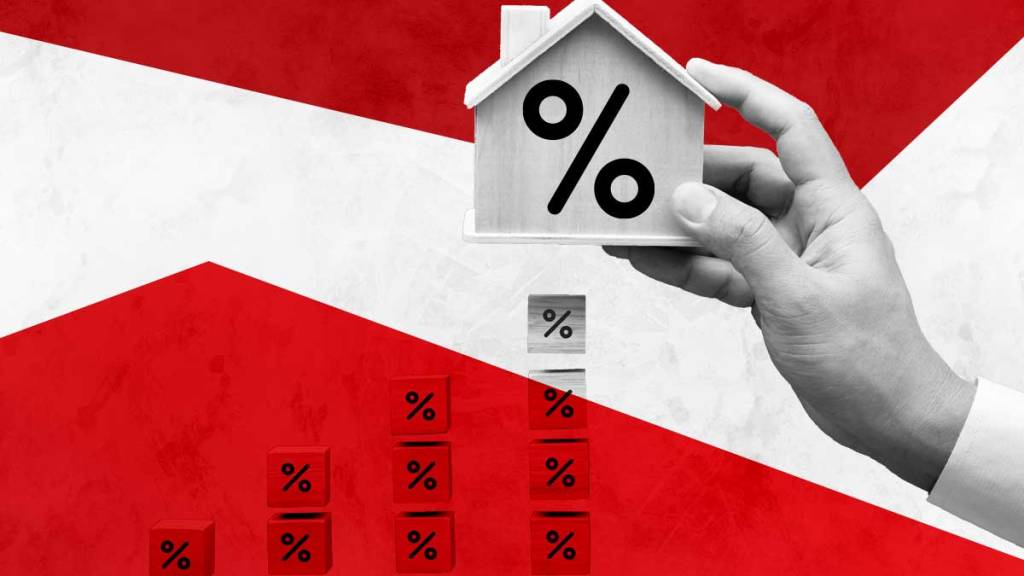The collapses of Silvergate Bank, Silicon Valley Bank and Signature Bank, the rescue of First Republic Bank and the acquisition of Credit Suisse by UBS, brought turbulence to the financial markets that led to a decline in mortgage rates – despite the Federal Reserve hiking federal funds rate by 25 basis point on Wednesday.
The bank crisis has also reduced the spread between conforming and jumbo loan rates. Mortgage industry experts believe the current turbulence has potential to hit the jumbo space harder, mainly due to a reduced investor appetite in the secondary market and banks’ tightened financial conditions for borrowers.
Freddie Mac’s Primary Mortgage Market Survey showed on Thursday that the 30-year fixed-rate mortgage at 6.42% as of March 23, down 18 basis points from the previous week. The survey shows the same rate was 4.42% a year ago.
“Mortgage rates continued to slide down as financial market concerns came to the fore over the last two weeks,” Sam Khater, Freddie Mac’s chief economist, said in a statement.
“However, on the homebuyer front, the news is more positive, with improved purchase demand and stabilizing home prices. If mortgage rates continue to slide over the next few weeks, look for a continued rebound during the first weeks of the spring homebuying season,” Khater added.
The market outlook improved after the Fed’s meeting on Wednesday as concerns over further banking failures waned, and markets proceeded with business as usual, according to Hannah Jones, Realtor.com economic data analyst.
“Chair [Jerome] Powell stated that the recent banking sector instability is likely to lead to tighter lending requirements, which could serve to cool inflation,” Jones said in a statement. “Depending on the extent of the impact of a tighter banking sector, Powell expressed a ‘wait-and-see’ approach to further contractionary policy.”
According to Jones, the federal funds rate is expected to remain elevated through the end of the year, meaning that a higher interest rate environment is “here to stay for the time being, including for home loans.”
The jumbo space
Mortgage rate indexes show how conforming loans ($726,200 balance or less) and jumbo loans (greater than $726,200) have behaved over the last week amid the bank crisis.
According to the Mortgage Bankers Association data, the 30-year fixed rate with conforming loan balances decreased to 6.48% for the week ending March 17, down 23 basis points compared to the previous week. Meanwhile, rates on jumbo loans fell only nine bps to 6.30% in the same period, reducing the spread between both rates.
At Mortgage News Daily, rates were at 6.44% for conforming on Thursday afternoon, down one basis point from the previous closing. Rates were at 5.99% for jumbo loans, decreasing four basis points in the same period. The spread between both rates, which reached 100 basis points in October, is down to 45 basis points.
“When banking gets stressed, credit expansion gets tighter and tighter. Non-QM and jumbo loans with certain banks are harder to get from borrowers, as we saw during the first few months of the Covid-19 pandemic too. Non-QM and jumbo loans got impacted, but traditional conventional loans were still flowing,” Logan Mohtashami, lead analyst at HousingWire, said.
“For some banks, that is a bigger reality than for others. However, when mortgage stress happens, pricing does worse for Jumbo banks loans vs government conforming loans,” Mohtashami added.
Jumbo loans are typically a tool for small banks or credit unions to get borrowers with a lot of cash to use their other banking services. To attract these clients, these lenders usually offer a lower mortgage rate and keep the loans in their portfolios rather than selling to investors in the secondary market, as independent mortgage banks (IMBs) usually do.
Banks are the country’s top non-agency jumbo mortgage producers, per the Inside Mortgage Finance data. The leaders in 2022 were Wells Fargo ($45.4 billion in volume), Chase ($38.3 billion) and Bank of America Home Loans ($33.3 billion).
First Republic Bank, next on the list with a $31.6 billion volume in 2022, got $30 billion from 11 big banks amid a deposit run last week and is reportedly negotiating a second rescue through a capital infusion.
“If banks are starting to get pressure on deposits, that business [jumbo loans] might not mean so much anymore to grow,” a secondary market executive at a brokerage firm told HousingWire.
“So, there might not be as much offering at the local credit union or bank level of jumbo loans because they need to focus on not tying up large amounts of cash in something that might not be easily sellable or to something that is below market pricing,” the executive said.
Banks facing liquidity issues are expected to sell their mortgage backed-securities portfolios in the secondary market, pressuring MBS prices, according to the executive. The executive differentiates the agency MBS market, which is backed by government-sponsored enterprises Fannie Mae and Freddie Mac, from the private label market, which is backed by the loans on their structures. The latter will face more challenges as they are seen as riskier investments.






